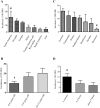Climates on incidence of childhood type 1 diabetes mellitus in 72 countries
- PMID: 28993655
- PMCID: PMC5634499
- DOI: 10.1038/s41598-017-12954-8
Climates on incidence of childhood type 1 diabetes mellitus in 72 countries
Abstract
We are aimed to systematically assess the worldwide trend in incidence of childhood type 1 diabetes mellitus (CT1DM) from 1965 to 2012 and to discuss whether climate affect incidence of CT1DM. We searched the relevant literatures in detail to judge the effect of different climates on incidence of CT1DM. The climates included Mediterranean, monsoon, oceanic, continental, savanna, and rainforest. According to different climates, we further researched relevant factor such as sunshine durations and latitudes. The overall incidence of CT1DM in 72 countries was 11.43 (95% CI 10.31-12.55) per 100,000 children/yr. The incidence of CT1DM in Oceanic climate [10.56 (8.69-12.42)] is highest compared with other climates; the incidence in 40°-66°34'N/S [14.71 (12.30-17.29)] is higher than other latitude groups; the incidence in sunshine durations with 3-4 hours per day [15.17 (11.14-19.20)] is highest compared with other two groups; the incidence of CT1DM from 2000 to 2012 [19.58 (14.55-24.60)] is higher than other periods; all p < 0.01. Incidence of CT1DM was increasing from 1965 to 2012, but incidence in Oceanic climate is higher than other climates. Furthermore, it is higher in centers with higher latitude and lower sunshine durations. The climates might play a key role in inducing CT1DM.
Conflict of interest statement
The authors declare that they have no competing interests.
Figures




Similar articles
-
Low mean temperature rather than few sunshine hours are associated with an increased incidence of type 1 diabetes in children.Eur J Epidemiol. 2016 Jan;31(1):61-5. doi: 10.1007/s10654-015-0023-8. Epub 2015 Mar 28. Eur J Epidemiol. 2016. PMID: 25821168
-
Childhood onset diabetes--time trends and climatological factors.Int J Epidemiol. 1994 Dec;23(6):1234-41. doi: 10.1093/ije/23.6.1234. Int J Epidemiol. 1994. PMID: 7721526
-
Exposure to sunshine early in life prevented development of type 1 diabetes in Danish boys.J Pediatr Endocrinol Metab. 2016 Apr;29(4):417-24. doi: 10.1515/jpem-2015-0393. J Pediatr Endocrinol Metab. 2016. PMID: 26673019
-
[Incidence of childhood diabetes in Hungary].Orv Hetil. 1989 Dec 24;130(52):2775-8. Orv Hetil. 1989. PMID: 2691948 Review. Hungarian.
-
[Incidence of IDDM in children (age 0-14 yrs) in Málaga 1982-1988].An Esp Pediatr. 1992 Dec;37(6):485-8. An Esp Pediatr. 1992. PMID: 1482021 Review. Spanish.
Cited by
-
Immunologic Effects of Vitamin D on Human Health and Disease.Nutrients. 2020 Jul 15;12(7):2097. doi: 10.3390/nu12072097. Nutrients. 2020. PMID: 32679784 Free PMC article. Review.
-
Incidence, prevalence and care of type 1 diabetes in children and adolescents in Germany: Time trends and regional socioeconomic situation.J Health Monit. 2023 Jun 14;8(2):57-78. doi: 10.25646/11439. eCollection 2023 Jun. J Health Monit. 2023. PMID: 37408713 Free PMC article.
-
The Role of Vitamin D and Vitamin D Receptor in Sepsis.Curr Issues Mol Biol. 2025 Jul 1;47(7):500. doi: 10.3390/cimb47070500. Curr Issues Mol Biol. 2025. PMID: 40728969 Free PMC article. Review.
-
Immunomodulatory actions of vitamin D in various immune-related disorders: a comprehensive review.Front Immunol. 2023 Jul 14;14:950465. doi: 10.3389/fimmu.2023.950465. eCollection 2023. Front Immunol. 2023. PMID: 37520529 Free PMC article. Review.
-
Setting the Stage for Insulin Granule Dysfunction during Type-1-Diabetes: Is ER Stress the Culprit?Biomedicines. 2022 Oct 25;10(11):2695. doi: 10.3390/biomedicines10112695. Biomedicines. 2022. PMID: 36359215 Free PMC article. Review.
References
Publication types
MeSH terms
LinkOut - more resources
Full Text Sources
Other Literature Sources
Medical
Miscellaneous

